How to Talk to Your Stylist to Get the Exact Haircut You Want | The Ultimate Communication Guide
Your Perfect Haircut is a Conversation Away
Walking out of a salon with a haircut that makes you feel incredible is a transformative experience. But a disappointing cut can affect your confidence for weeks. What’s the secret ingredient that separates a hair triumph from a hair tragedy? It’s not just the stylist’s skill—it’s the quality of your conversation. Learning how to talk to your stylist is the single most important step you can take to ensure you get the exact haircut you want. The consultation is a collaboration, a creative partnership where your vision and your stylist's expertise merge to create something beautiful. This guide will break down every step of the process, from pre-appointment homework to providing feedback in the chair, empowering you to communicate with confidence and clarity.
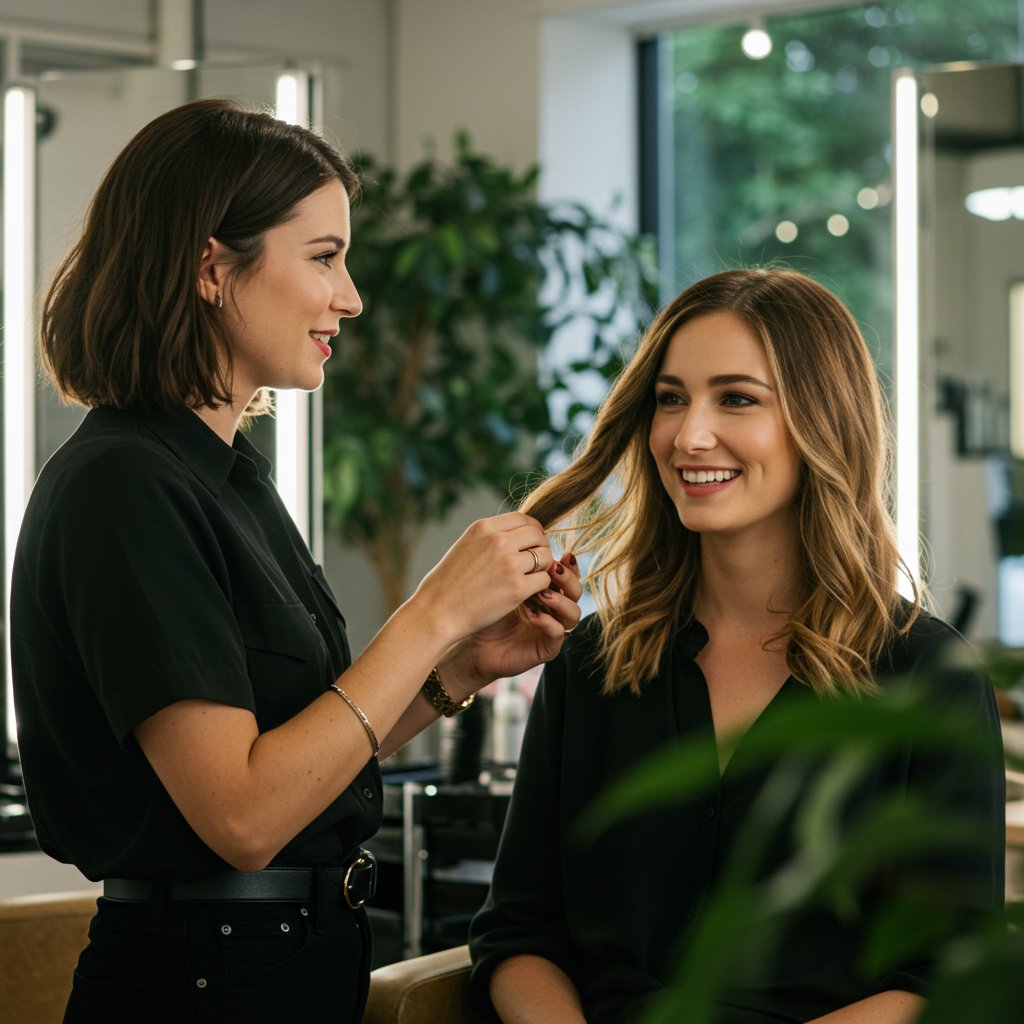
Think of your stylist as a highly skilled artist and interpreter. They can read hair texture, understand face shapes, and execute complex techniques, but they can't read your mind. The more precise and descriptive you are, the better they can translate your desires into a reality. Vague requests like “just a trim” or “something different” are open to wide interpretation and can lead to misunderstandings. By preparing for your appointment and learning a bit of the language, you build a bridge between your idea and their scissors, ensuring the final result isn't just a haircut, but your haircut.
This comprehensive guide is designed to be your ultimate resource for effective salon communication. We'll cover everything from finding the right inspiration photos and understanding key terminology to discussing your lifestyle and providing constructive feedback. By the end, you'll feel prepared and empowered for your next salon visit, ready to build a strong rapport with your stylist and, most importantly, walk away with a haircut you truly love.
Before You Arrive: The Homework Phase
Great communication starts before you even sit in the salon chair. The preparation you do at home is crucial for a successful appointment. This “homework phase” is about self-discovery and research, helping you solidify your vision and understand the practicalities of your hair. The first step is to analyze your own hair. What is its natural texture—is it fine, thick, coarse, curly, wavy, or straight? How does it behave on a daily basis? Does it get frizzy in humidity or fall flat easily? Understanding your hair's unique characteristics is fundamental because a style that looks stunning on someone with thick, wavy hair might not be achievable or look the same on someone with fine, straight hair. Be realistic about your hair's capabilities and limitations.

Once you have a good handle on your hair type, it’s time for the fun part: seeking inspiration. Dive into platforms like Pinterest, Instagram, and hair-focused magazines. Create a dedicated board or folder to collect images of haircuts you're drawn to. Don't limit yourself to just one photo. Collect several examples from different angles—front, side, and back. Look for photos of the style on people with a similar hair texture and face shape to your own. This will give you a much more realistic idea of how the cut might look on you. Pay attention to the details. What specifically do you like about each photo? Is it the long, sweeping bangs, the choppy layers, the blunt line of the bob, or the way the hair is styled? The more specific you can be, the better.
Finally, consider what you don't like. Sometimes, knowing what to avoid is just as helpful as knowing what you want. Find a few pictures of haircuts that are definite “no’s” for you. This helps your stylist understand your boundaries and aesthetic preferences more clearly. Explaining that you dislike heavy bangs or a super-short layer can prevent them from suggesting something that goes against your taste. This preparation ensures you walk into the salon with a well-rounded vision, not just a single photo, making the initial consultation more productive and collaborative.
Visual Aids Are Your Best Friend
In the world of hair, a picture is truly worth a thousand words. Visual aids are the most powerful tool in your arsenal for explaining your desired haircut. While verbal descriptions are important, they can be subjective. Your idea of “a few inches off” might be very different from your stylist’s. A photo eliminates this ambiguity and provides a concrete, shared reference point. Bringing in multiple images is even better. One photo might show the perfect bangs, another might have the ideal length, and a third could showcase the exact texture you want. This collage of ideas helps your stylist piece together a custom look that incorporates all the elements you love.
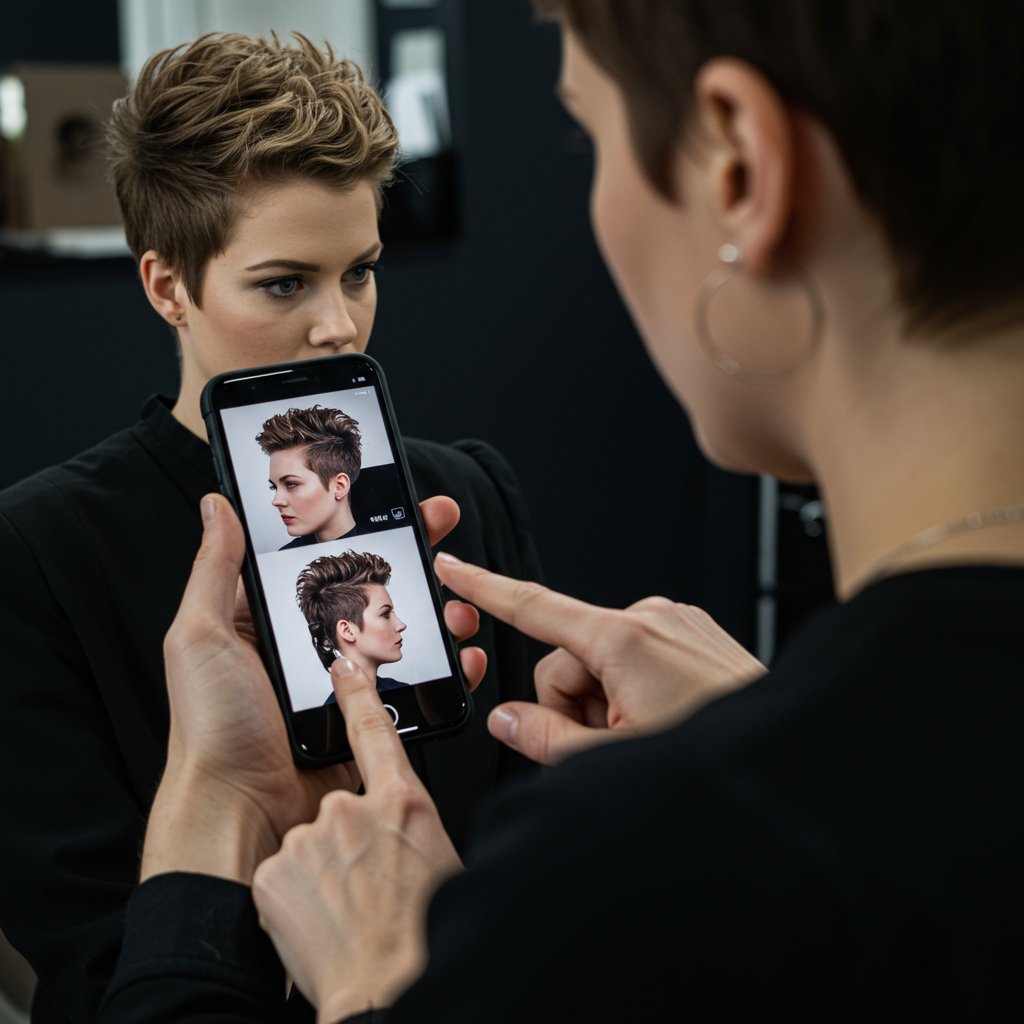
When presenting your photos, be prepared to discuss them in detail. Use them as a starting point for the conversation. Point out the specific features you are drawn to in each image. For example, you might say, “I love the soft, face-framing layers in this picture, but I want the overall length from this other photo.” This shows you've thought critically about the style and aren't just fixated on one impossible ideal. It also opens the door for your stylist to offer their professional opinion. They can tell you if those specific layers will work with your hair texture or suggest a slight modification to better suit your face shape. The goal is to use the photos to guide a collaborative process, not to hand over an order.
Remember to manage your expectations. A photo is an inspiration, not a guarantee of an identical outcome. The person in the photo has a different hair type, texture, density, and color than you do. They also have a team of professional stylists who spent hours on that specific look, not to mention perfect lighting and potential photo editing. A skilled stylist will use your reference photos to create a version of that style that is tailored specifically for you. Trust their expertise when they explain why a certain element might need to be adjusted. The most successful outcomes happen when your inspirational images meet the stylist's professional knowledge and artistry.
Mastering the Lingo: Speaking Your Stylist's Language
While photos are essential, backing them up with the right vocabulary will elevate your consultation to the next level. Understanding some basic haircut terminology helps you articulate your preferences with precision. This clarity minimizes misunderstandings and ensures you and your stylist are on the same page. Let’s break down some of the most important terms.
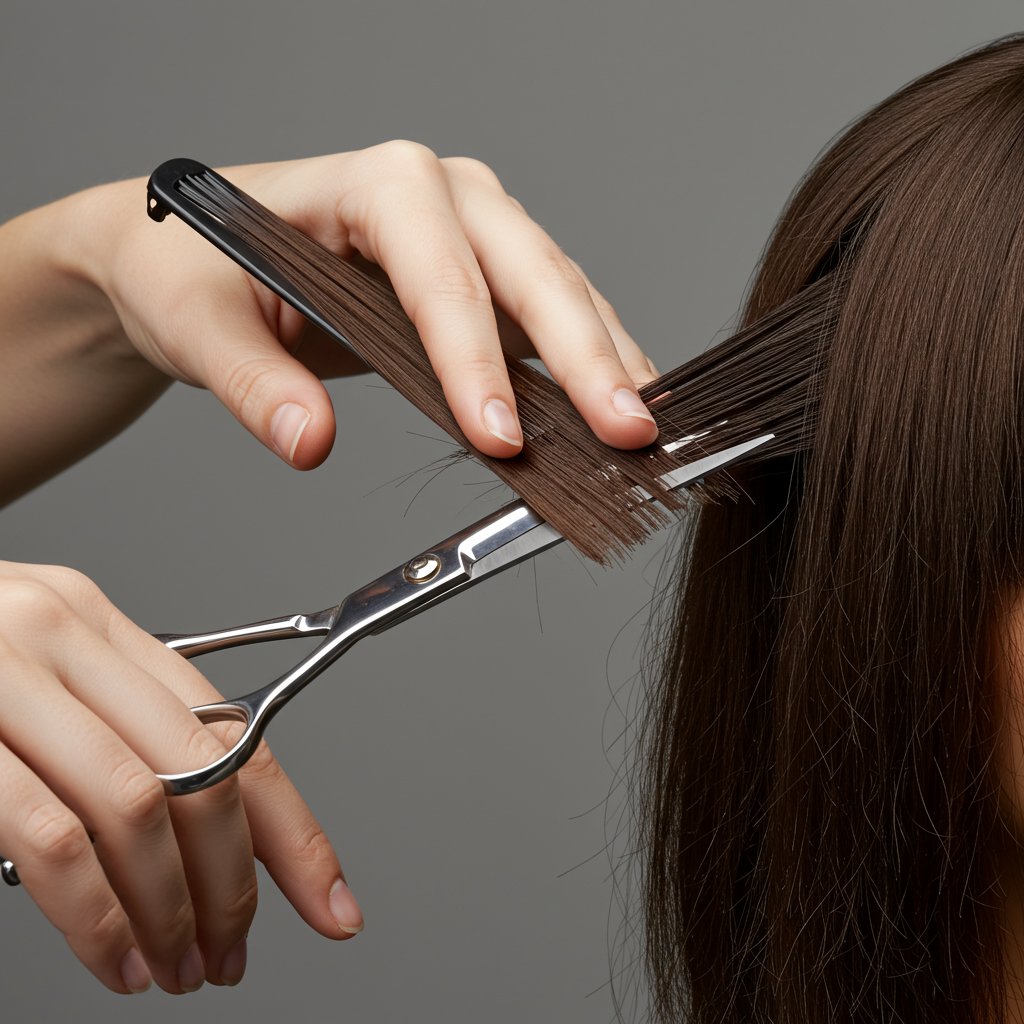
Describing Length
Instead of saying “take a few inches off,” be more specific. Use your hands to show exactly where you want the length to fall. Point to your chin, your collarbone, your shoulder blades, or your mid-back. If you're getting a trim, specify if you want a “dusting” (just the very ends, to remove split ends) or a more significant amount like a half-inch or full inch. Saying “I want to keep the length but add shape” is also a very helpful phrase.Talking About Layers
Layers are what give a haircut movement, volume, and shape. But “layers” is a broad term. Be more descriptive. Do you want “long, subtle layers” that blend seamlessly for soft movement? Or are you looking for “short, choppy layers” to create volume and texture? You might want “face-framing layers” that start around your chin or cheekbones to soften your features. Mentioning if you want to remove weight or add volume can also help your stylist determine the best type and placement of layers for your hair.Explaining Texture and Ends
How the ends of your hair are cut dramatically affects the overall style. Do you prefer a “blunt” or “sharp” line for a clean, solid look (common with bobs)? Or do you want “textured” or “piecey” ends, where the stylist uses techniques like point-cutting to create a softer, more lived-in finish? For shorter cuts, you might discuss “razoring” for a wispy, edgy texture. Communicating your preference for the finish of the haircut is a crucial detail.The World of Bangs (Fringes)
If you’re considering bangs, be extremely specific. There's a whole universe of options. Are you thinking of “blunt bangs” that go straight across? “Curtain bangs” that are longer and parted in the middle? “Side-swept bangs” for a softer look? Or maybe wispy, see-through “Bardot bangs”? Use photos and descriptive words to pinpoint the exact style, length, and thickness you desire. For example, “I want curtain bangs that hit right at my cheekbone.”Discussing Your Lifestyle and Maintenance Routine
A fantastic haircut isn't just about how it looks when you leave the salon; it's about how it looks and feels every day after. This is why having an honest conversation about your lifestyle and daily routine is non-negotiable. Your stylist needs to know how much time and effort you are willing—or able—to put into your hair each morning. A high-maintenance, precision bob that requires daily flat-ironing is a poor choice for someone who prefers to wash-and-go. Be truthful about your habits.

Come prepared to answer questions like: How often do you wash your hair? Do you prefer to air-dry or do you use a blow dryer? Are you comfortable using styling tools like curling irons or straighteners? What styling products, if any, do you typically use? If you have 10 minutes to get ready in the morning, tell your stylist that. This information allows them to design a cut that works with your life, not against it. A great stylist will prioritize creating a shape that looks good with minimal effort if that’s what you need. They can suggest cuts that enhance your natural texture, so you're not fighting it every day.
This conversation also extends to long-term maintenance. Ask your stylist about the upkeep required for the cut you're considering. How often will you need to come in for a trim to maintain the shape? A short pixie cut might require visits every 4-6 weeks, while long layers can often go 10-12 weeks. Understanding the time and financial commitment beforehand helps you make an informed decision. If you're trying to grow your hair out, communicate that as well. Your stylist can then shape your hair in a way that grows out gracefully, avoiding awkward in-between stages. Honesty about your routine and goals ensures you get a haircut that is not only beautiful but also sustainable for your lifestyle.
The Consultation is Key: A Two-Way Conversation
The consultation, that 5-10 minute chat before any scissors come out, is the most critical moment of your appointment. This is not a passive event where you simply give instructions. Treat it as an active, two-way conversation. It's your chance to share your research and desires, and it's the stylist’s chance to assess your hair and provide their expert feedback. Arrive a few minutes early so you don't feel rushed. Start by showing them your inspiration photos and explaining what you like about them, using the terminology we discussed earlier.
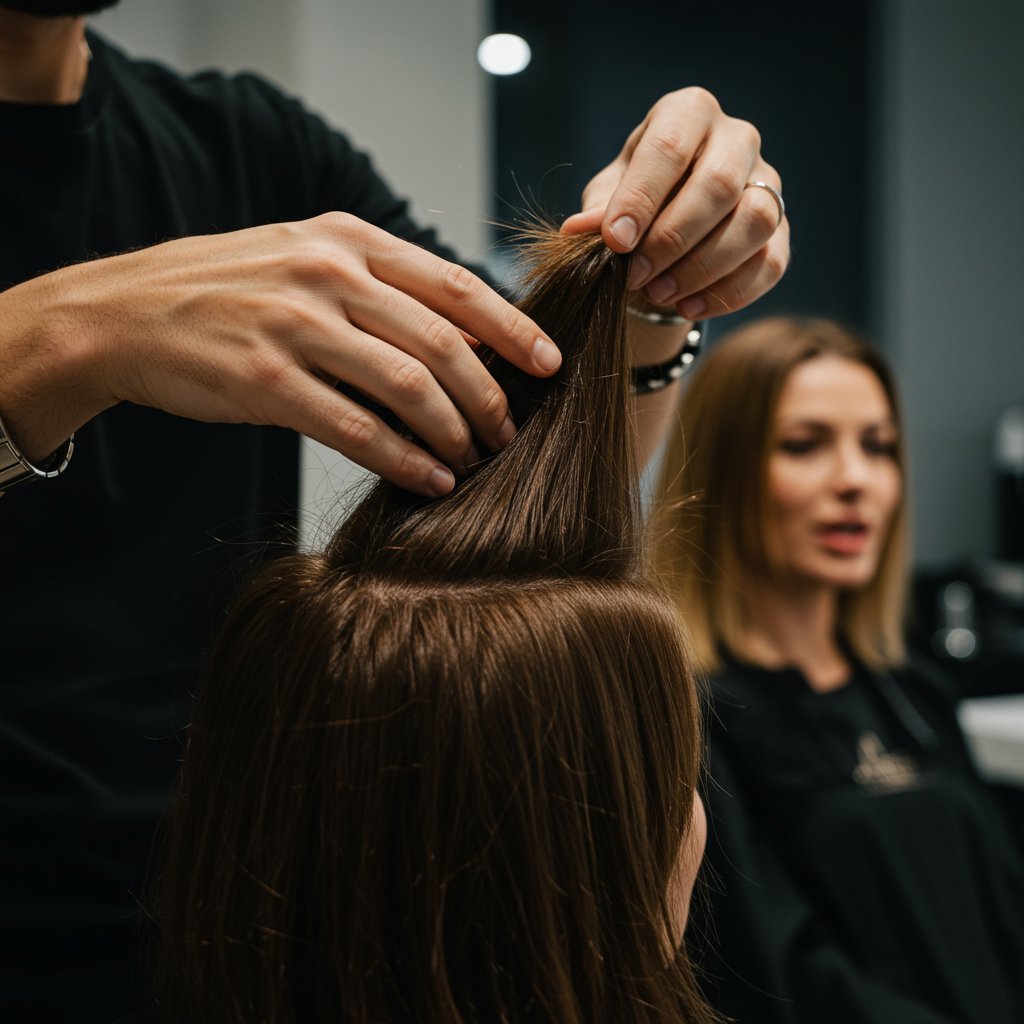
After you've shared your vision, pause and listen. A great stylist will ask clarifying questions. They will also physically touch and analyze your hair, checking its texture, density, elasticity, and growth patterns (like cowlicks). This hands-on assessment is vital. They might explain, “I see you like this very blunt bob, but because you have a strong cowlick right here, we might need to add some light texturizing to prevent it from flipping out.” This is not a rejection of your idea; it's an expert suggestion to adapt the style to your unique hair, ensuring a better result. Be open to their professional advice—they have the experience to foresee potential challenges and offer effective solutions.
Don’t be afraid to ask your own questions. This is your hair and your time. Good questions to ask include: “How do you think this style will work with my hair texture?” “What would be the best way to style this cut at home?” “What products would you recommend to maintain this look?” “Can you show me on my own hair where the shortest layer will fall?” This dialogue builds trust and ensures you both have a crystal-clear, shared vision before the first snip is made. A thorough consultation sets the stage for success and minimizes the chances of any unhappy surprises.
Providing Feedback During and After the Cut
Your role in the communication process doesn't end once the shampoo is done. Staying engaged while the haircut is in progress is perfectly acceptable and often encouraged. While you should trust your stylist and avoid micromanaging every snip, it's important to pay attention. Many stylists will check in with you at key stages, for example, after they’ve established the length or cut the first guide for the layers. If they ask, “Does this length look good to you?” give your honest feedback. It’s much easier to adjust a single section of hair than to correct an entire haircut after the fact.
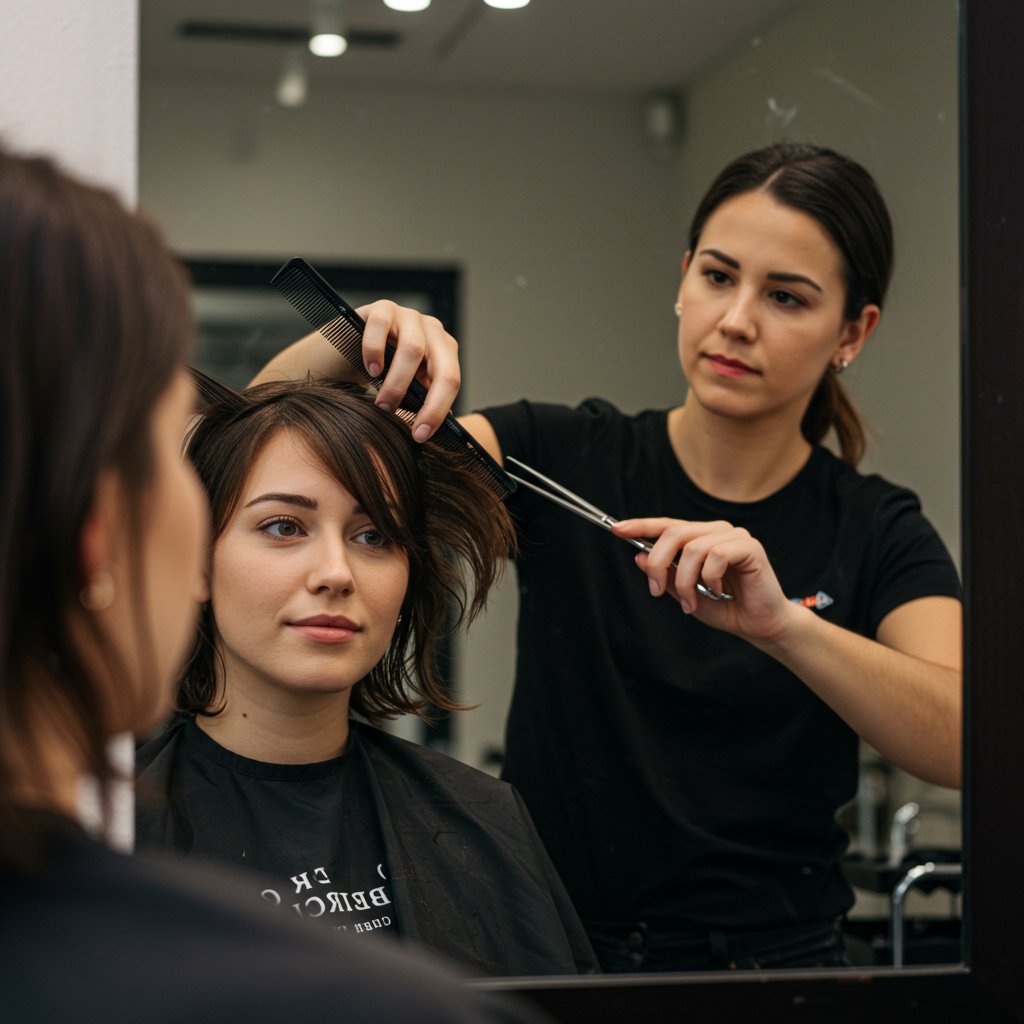
If you feel nervous or something seems different from what you discussed, speak up politely and calmly. You can say something like, “I’m a little nervous about the layers. Could you show me again how short the shortest one will be?” or “That seems a bit shorter than we talked about. Can we double-check?” A professional stylist wants you to be happy and will appreciate the opportunity to clarify and adjust. They would much rather have a conversation mid-cut than have an unhappy client at the end. Remember to phrase your concerns as questions, which fosters a collaborative and non-confrontational atmosphere.
Once the haircut is complete and styled, take a good look. The stylist will hand you a mirror to see the back. Examine it from all angles. If there's a small detail you'd like changed—perhaps a piece that feels too long or a bit of weight that needs more texturizing—now is the time to mention it. Most stylists are happy to make minor tweaks at the end of the service. Voicing your satisfaction is just as important. If you love it, say so! Positive feedback builds a great long-term relationship with your stylist.
Bonus Tips for a Flawless Salon Visit
- Arrive with Clean, Dry Hair: Come to the salon with your hair styled the way you normally wear it. This gives the stylist a clear picture of your hair's natural texture and your everyday look.
- Don't Wear a Hoodie or Turtleneck: These can get in the way and make it difficult for the stylist to cut clean, even lines. Opt for a crew neck or something with a lower neckline.
- Trust Your Gut: If the consultation doesn't feel right or you don't feel like the stylist is listening, it's okay to politely end the appointment before the cut begins. Finding a stylist you connect with is key.
- Be Open-Minded: While it's great to have a clear vision, be open to your stylist's suggestions. They may have an idea that you hadn't considered that would be even more flattering for you.
- Talk About Your Hair History: Let your stylist know about any recent chemical treatments (color, keratin, etc.) or challenges you've had with previous haircuts. This context is incredibly valuable.
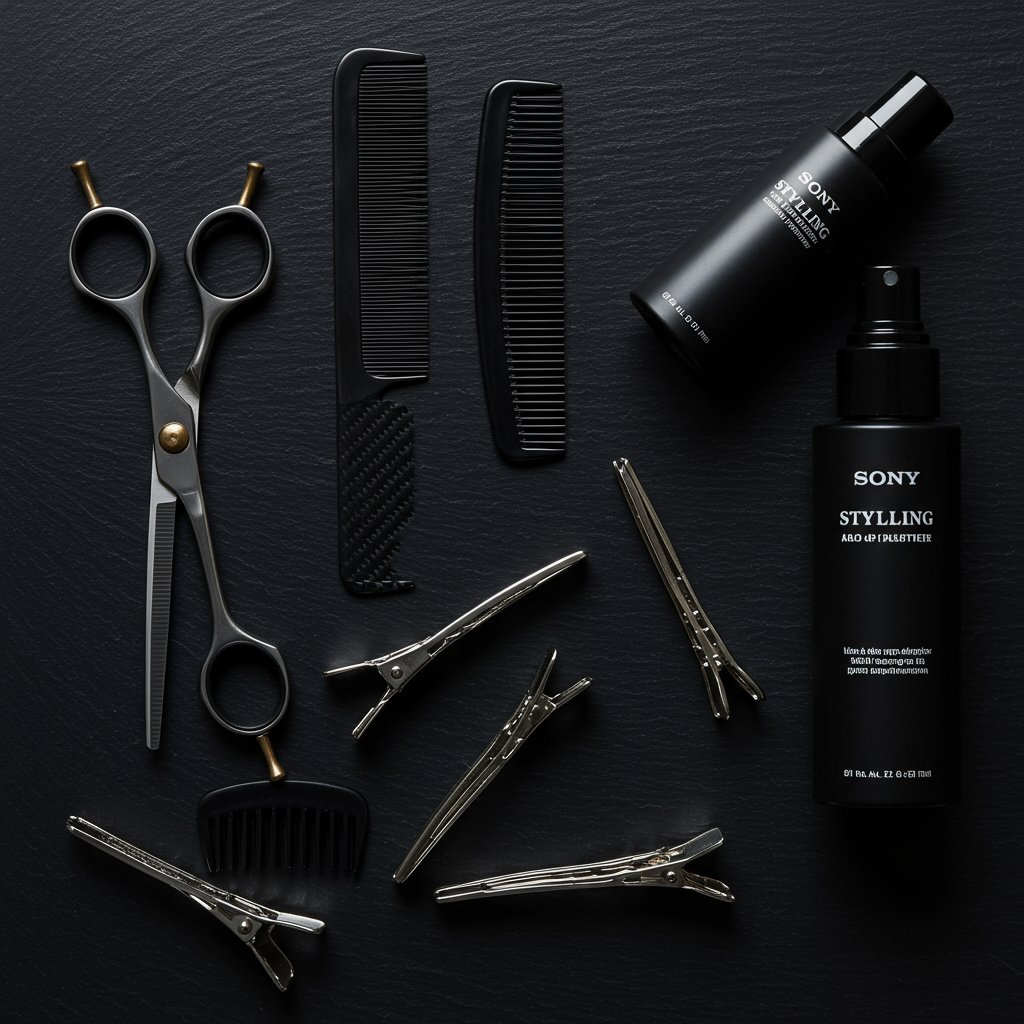
Frequently Asked Questions (FAQ)
Q1: What if I have no idea what haircut I want? Can my stylist just decide for me?
While a stylist can certainly offer suggestions based on your face shape, hair type, and lifestyle, it's always best to come in with at least a general idea. You can start by telling them what you don't want and what your main goals are (e.g., “I want something lower maintenance,” or “I want my hair to look thicker”). This gives them a direction to work in. Giving them complete free rein can be risky if you haven't established a long-term, trusting relationship.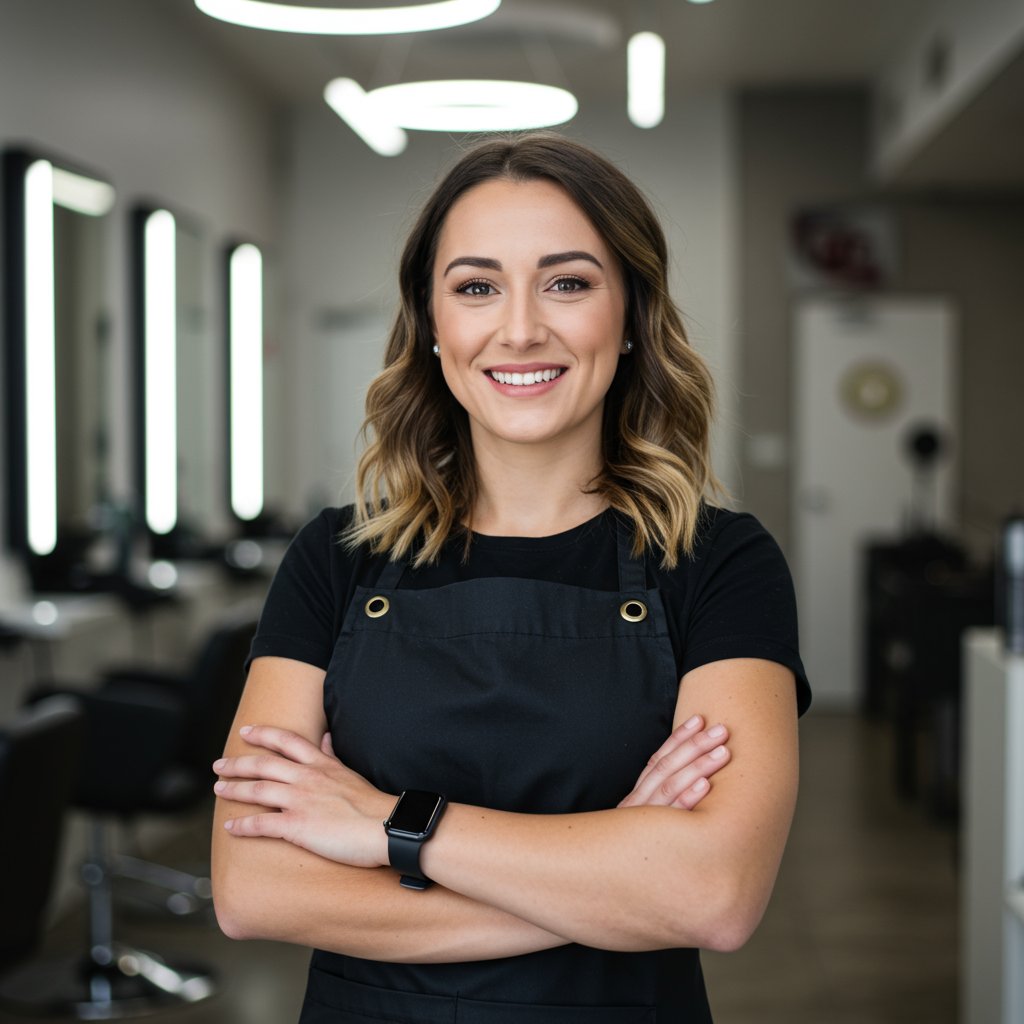
Q2: Is it rude to show my stylist a picture of their own work from their Instagram?
Not at all! In fact, it's a huge compliment. It shows that you admire their work and trust their ability to execute that specific style. It also confirms that the look you want is already in their wheelhouse, making it a great starting point for your consultation.Q3: How do I tell a stylist I'm unhappy with my haircut without being awkward?
Honesty and politeness are key. If it's at the end of the appointment, point out the specific issue calmly. For example, “I really love the shape, but this one piece by my face feels a bit too long. Would it be possible to shorten it slightly?” If you only notice an issue after you get home and style it yourself, call the salon. Most reputable salons have a policy that allows for minor adjustments within a week or so of your appointment.Q4: Should I get a haircut or hair color first if I'm doing both?
Generally, it's best to have your haircut first. The cut establishes the shape, and then the color can be strategically placed to enhance that shape. For example, highlights can be placed to accentuate layers or a certain angle. Cutting the hair after coloring it can sometimes result in cutting off the freshly colored ends, especially with techniques like balayage or ombré. Discuss the plan with your stylist, as they will know the best order for your specific services.Q5: What's the difference between a 'trim' and a 'haircut'?
Technically, a trim is a haircut. Both require the same amount of skill, sectioning, and attention to detail from a stylist. The term 'trim' simply implies that you are maintaining your current shape by removing a small amount of length (typically an inch or less). A 'haircut' usually refers to creating a new shape or a more significant change in length. However, you should expect to pay the same price for both, as the service time and expertise required are identical.Conclusion: Your Voice is Your Best Accessory
Achieving the haircut of your dreams is not a matter of luck; it's a matter of clear, confident communication. By investing a little time in preparation, learning the right vocabulary, and engaging in an open dialogue with your stylist, you transform the appointment from a passive service into an active collaboration. Remember that your stylist is your partner in this process, equipped with the technical skills and artistic vision to bring your ideas to life. Your role is to provide the clear, detailed blueprint.
Use photos, be specific about your lifestyle, ask questions, and provide feedback. Building this strong communication foundation will not only lead to a fantastic haircut but will also help you build a lasting, trusting relationship with your stylist. The next time you sit in the salon chair, you'll be armed with the knowledge and confidence to articulate your vision precisely, ensuring you walk out the door feeling and looking like the best version of yourself. Your perfect haircut is just a conversation away.


